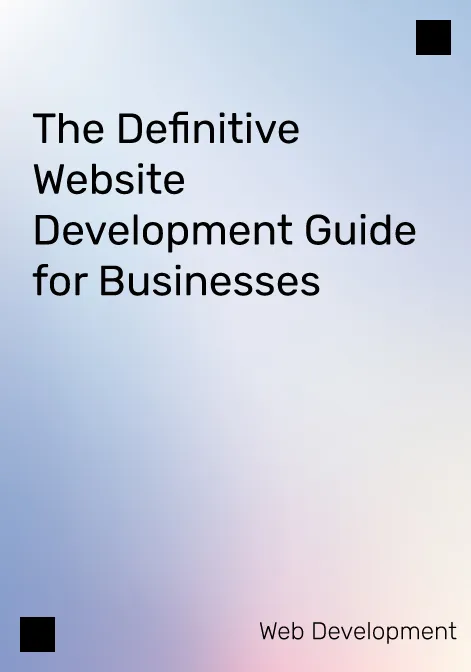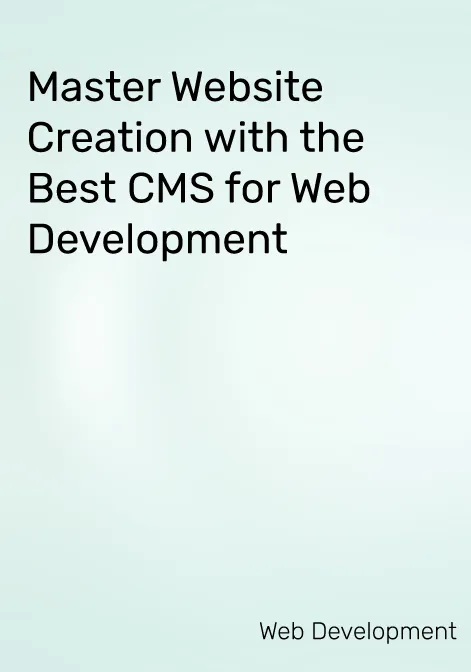Planning Your Website
Target Audience
Before jumping into design and development, it’s crucial to define your ideal customer. Understanding their needs, preferences, and pain points will help tailor your website to provide the best user experience. Consider factors like age, gender, occupation, and interests to create a detailed customer persona.
Website Goals
What do you want to achieve with your website?
- Brand Awareness: Establishing your online presence.
- Lead Generation: Capturing visitor information for future marketing.
- Sales: Driving e-commerce transactions or service bookings.
Clearly defined goals will guide your decisions throughout the website development stages.
Content Strategy
Your content strategy should align with your website goals. Plan the structure and information architecture to ensure that users can easily find what they need. This includes:
- Homepage
- About Us
- Services/Products
- Blog
- Contact Information
Competitive Analysis
Analyse competitor websites to identify best practices and potential gaps. Look for elements like layout, design, content quality, and user engagement. This will provide insights into what works well and what can be improved on your site.
Additional Reads: Magento Development
Design & User Experience (UX)
Website Design Basics
Effective web design involves key elements such as:
- Layout: Organize content in a logical, visually appealing way.
- Typography: Choose fonts that are readable and consistent with your brand.
- Visual Hierarchy: Use size, color, and placement to highlight important elements.
User Experience (UX) Principles
A user-friendly website is intuitive and easy to navigate. Focus on:
- Navigation: Ensure that menus are straightforward and accessible.
- Load Time: Fast-loading pages improve user satisfaction and SEO.
- Mobile Responsiveness: Your site should work seamlessly across all devices.
Wireframing & Prototyping
Wireframes and prototypes help visualize the website structure and design before the development phase. Tools like Sketch, Figma, and Adobe XD are commonly used for this purpose.
Development & Functionality
Front-End Development
The front end of a website involves HTML, CSS, and JavaScript. These technologies create the visual elements users interact with. Key points include:
- HTML (HyperText Markup Language): Structures the content.
- CSS (Cascading Style Sheets): Styles the content.
- JavaScript: Adds interactivity and dynamic features.
Back-End Development
The back-end involves server-side scripting languages and database management. This is where the website’s functionality is built. Common technologies include:
- PHP and Python for server-side scripting.
- Databases like MySQL and MongoDB for data storage and management.
Content Management Systems (CMS)
A CMS allows you to manage and update your website easily
- WordPress
Benefits: Highly customizable, large community support
Best For: Blogs, small to medium businesses
- Wix
Benefits: User-friendly, drag-and-drop editor
Best For: Small businesses, personal websites
- Squarespace
Benefits: Elegant design templates, all-in-one platform
Best For: Creatives, e-commerce
Website Security
Security is paramount. Implement measures such as:
- SSL Certificates for secure data transmission.
- Regular backups to prevent data loss.
- Security plugins and updates to protect against vulnerabilities.
Testing & Launch
Quality Assurance (QA) Testing
Before launching, rigorously test your website for:
- Functionality: Ensure all features work as intended.
- Compatibility: Check that the site works across different browsers and devices.
- Responsiveness: Verify that the site adapts to various screen sizes.
Website Launch & Optimization
Choose a launch strategy that suits your needs, whether it’s a soft launch or a grand reveal. Post-launch, focus on ongoing SEO optimization techniques:
- Keyword Integration: Use your target keywords naturally in your content.
- Meta Tags: Optimize titles and descriptions for search engines.
- Analytics: Monitor performance and make data-driven improvements.
Maintenance & Updates
Website Maintenance
Regular updates are essential to keep your website running smoothly. This includes:
- Software Updates: Keep your CMS and plugins up to date.
- Content Revisions: Update and add new content to keep it relevant.
- Security Patches: Apply fixes promptly to address vulnerabilities.
Scalability & Growth
Plan for future growth by ensuring your website can scale. This may involve upgrading your hosting plan, optimizing your database, and implementing load-balancing solutions.
Additional Reads: CMS For Web Development
Contact Matic Solutions for Your Website Development Needs
Are you ready to transform your online presence and achieve your business goals?
Matic Solutions is here to help you every step of the way. Our team of experienced professionals specializes in creating custom websites that are not only visually stunning but also highly functional and user-friendly. We offer a full spectrum of services from initial planning and Website design to development and ongoing maintenance.
Why Choose Matic Solutions?
- Expertise: Our team has extensive experience in front-end and back-end development, ensuring that your website will be built using the latest technologies and best practices.
- Tailored Solutions: We understand that every business is unique. That’s why we offer customized solutions tailored to meet your specific needs and objectives.
- SEO Optimization: Our websites are built with SEO in mind, helping you achieve better visibility and higher rankings on search engines.
- Ongoing Support: We provide continuous support and maintenance to ensure your website remains up-to-date and secure.
Get in Touch
We’d love to hear more about your project and discuss how we can bring your vision to life.
Contact us today to schedule a consultation:
- Phone: +91 98798 72727
- Email: info@maticsolutions.co.in
Partner with Matic Solutions and take your online presence to the next level.
Get started on your website development journey today!




